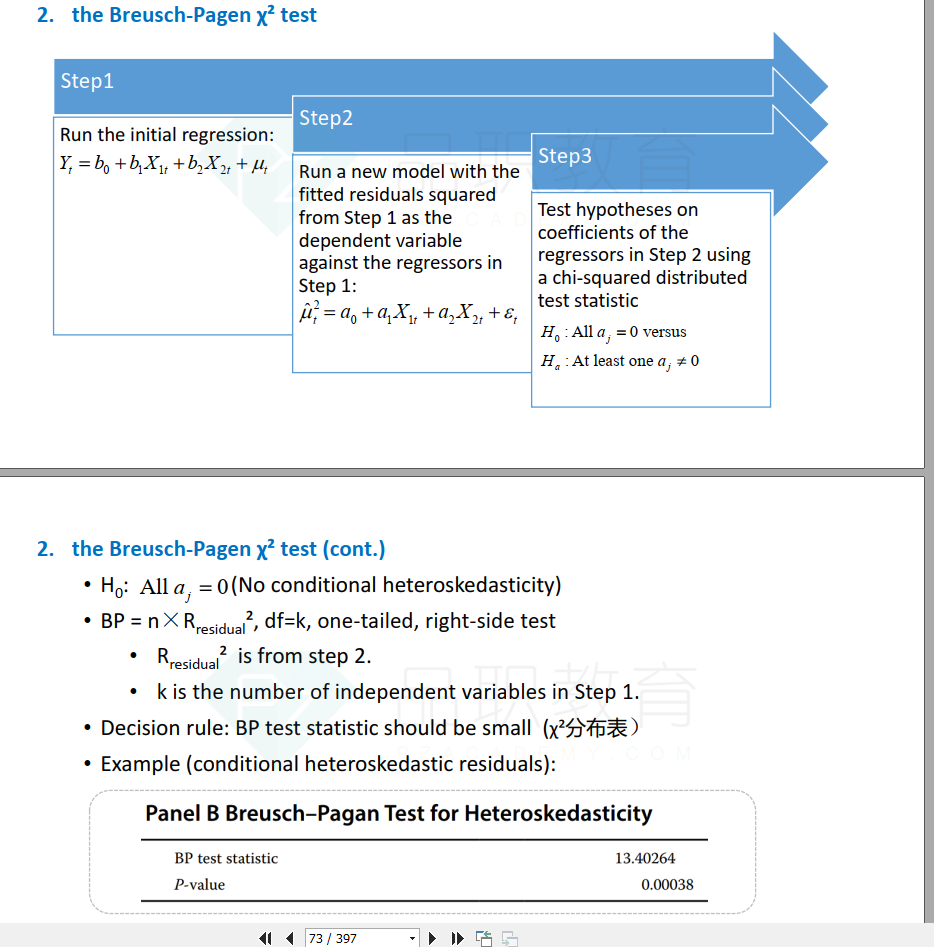NO.PZ2023040502000017
问题如下:
You
are a junior analyst at an asset management firm. Your supervisor asks you to analyze
the return drivers for one of the firm’s portfolios.
Model 3: RETi = b0 + bMRKTMRKTi
+ bHMLHMLi + bVIXVIXi + bSMBSMBi
+ bMOMMOMi + εi.
Your supervisor is concerned about conditional
heteroskedasticity in Model 3 and asks you to perform the Breusch–Pagan (BP)
test. At a 5% confidence level, the BP critical value is 11.07. You run the
regression for the BP test; the results are shown in Exhibit 1.
Calculate the BP test statistic using the data in Exhibit
1 and determine whether there is evidence of heteroskedasticity.
选项:
A.1.264, so there is no evidence of heteroskedasticity
6.251, so there is no evidence of heteroskedasticity
81.792, so there is evidence of heteroskedasticity
解释:
B is correct. The BP test statistic is calculated as
nR2, where n is the number of observations and R2 is from
the regression for the BP test. So, the BP test statistic= 96 × 0.06511 =
6.251. This is less than the critical value of 11.07, so we cannot reject the
null hypothesis of no heteroskedasticity. Thus, there is no evidence of heteroskedasticity.
老师,您好!
The BP test statistic is calculated as nR2, 有哪个地方讲到过BP检验的统计量如何计算、检验的原假设如何定义,以及什么条件下拒绝原假设的内容啊?麻烦老师再补充一下吧,谢谢了!





